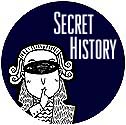 |
 |

It's judgement day for a storied block of
downtown.
by Jack Neely
Last week, the County Commission reviewed the latest site proposal for the
prodigal Justice Center. Impressively planned by Barber & McMurry, it's
now aimed at the 500 block of Gay Street. Those still in shock over worse
proposals are ready to jump at this one, just to protect dearer sites and
to get the damn thing out of the headlines. It's not a bad solution.
Most of the buildings threatened are pretty shabby-looking. Most are vacant.
A couple of them are Victorian, one decrepit, one brightened by a restoration
effort sometime in the last decade or so. The plainest building that's threatened
is the only occupied one: Gus' Restaurant, a lunchtime diner popular among
folks who like to smoke lots and lots of cigarettes with their meals. Today,
Gus' has downtown Knoxville's single most impressive gallery of autographed
star pictures: Robert Goulet, Lyle Lovett, Crytal Gayle...mostly folks whose
shows the proprietor has catered.
If you've noticed the mirror-image mortar-and-pestle logos emblazoned up
on the concrete facade, you might guess this building's original purpose.
Built around 1940 as Walgreens, it was an old-time drugstore with a lunch
counter down the side. In his novel, Bijou, David Madden describes
footloose kids, circa 1946, swarming around this place, sometimes skipping
out on tabs. It served that dual role well into the '80s, when Todd &
Armistead finally closed. At the time, the lunch counter was so popular it
expanded into the old drugstore half. Phyllis, the waitress who's worked
there for years, says the counter we sit at for lunch at Gus' is the one
that was here during the Walgreens era.
This counter was the site of some of the most dramatic moments of Knoxville's
Civil Rights era. In the summer of 1960, when Knoxville College students
challenged segregation laws by staging interracial sit-ins, they targeted
several downtown lunch counters. This may be the only one where you can still
sit and order a Coke and picture someone dumping it on your head.
If truth be told, Knoxville desegregation wasn't very dramatic stuff. Merrill
Proudfoot, a KC professor, did describe some events at this counter in his
nationally hailed book, Diary of a Sit-In—but don't wait for
the movie adaptation. There were no attack dogs, no fire hoses, no bloody
faces. A badly thrown salt shaker here at Walgreens, which got mentioned
in the national press, was one of the most exciting moments.
Nearby's an unkempt, boarded-up three-story Victorian building which baffles
passersby with a partly fallen and strangely garbled motto: Where Smart
Knoxville Buys, it appears to say. The sign probably dates from the middle
of this century, when a ladies' clothing shop was on the first floor. But
up on the third floor of this building were the studios of WROL, just as
that radio station was becoming known for popularizing country music. It
was probably on that lonesome third floor, in the mid-'30s, that future Opry
star Roy Acuff's voice and fiddle were first broadcast.
You probably won't find much sentiment to save either of those buildings.
But right in the center of the block is a larger place that's a little different.
Once called the S&W, the most glamorous cafeteria ever built in East
Tennessee and, for most of its 45 years, downtown Knoxville's most popular
restaurant. The S&W is loved, at least in memory. (Walk in the Great
Southern brewpub down the sidewalk—the most conspicuous decoration there,
after the gorilla, is a huge photo of a busy day at the S&W in the '30s.)
And to architects who don't remember the S&W, it's also among
Knoxville's most interesting buildings; UT architecture professor Mark Schimmenti
calls the S&W one of downtown's three most distinguished structures,
ranking with the Main Street Post Office and the interior of the Tennessee
Theater. A rare relic from the Art Moderne era, the S&W still flaunts
its style; its gilt flutings and polished terra cotta tiles still shine in
the afternoon sun.
But it closed 16 years ago, and despite sundry rumors of it reopening as
a dance club or a retail outlet/boutique or health club—and despite
the fact that little Asheville was somehow able to usefully renovate its
own downtown S&W—Knoxville's has remained central, beautiful, and
utterly vacant.
Schimmenti sees the S&W as an important symbol of the city. He's okay
with the Justice Center going in here. But he wants to preserve the elegant
old S&W—and incorporate it as a lobby for the new Justice Center.
If the S&W doesn't look solemnly legal, it definitely has lots
of legal associations. Most of Knoxville's lawyers and judges held court
at the S&W at one time or another. Among them was maverick attorney John
R. Neal, the eccentric law-school professor (fired from UT in the early '20s
for various idealogical outrages), assistant in the defense of John Scopes
in Dayton, and the chief attorney who drew up TVA's durable and admirable
charter in 1933. He later founded his own law school here, the John R. Neal
School of Law.
My favorite Neal story is told in Cormac McCarthy's novel, Suttree.
Neal was a familiar sight at the S&W, often eating by himself. One of
the absent-minded genius' manifold eccentricities was that he saved on belt
leather by tying his pants up with a rope. One day Neal had gotten his tray
full of lunch, had paid the cashier, and was looking for a place to sit when
his rope came untied. Neal stood there, helplessly holding his tray, his
pants around his ankles—until a merciful friend got up and helped him
out.
Granted, Schimmenti's proposal to front a justice center with a '30s art-moderne
lobby is probably a more imaginative proposal than Knoxville's likely to
approve. But before you pass judgment, take just a minute to have a look
at it, and consider.

|